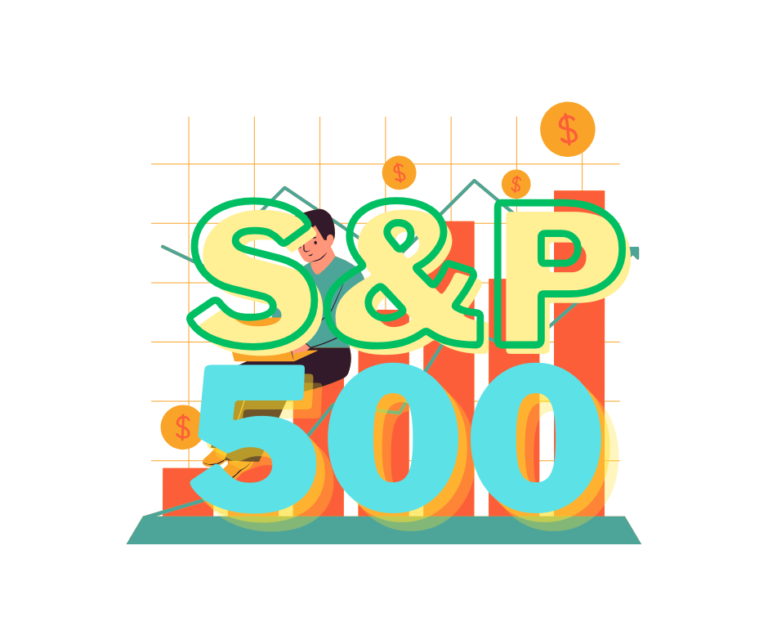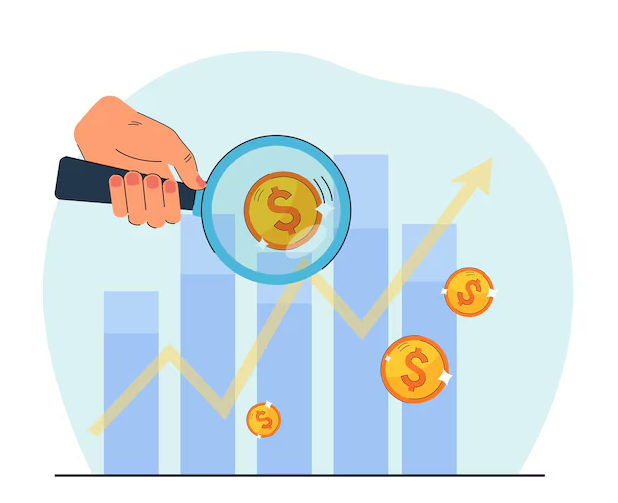Introduction
The most famous indices of the world’s stock market are probably the S&P 500 indices since they represent the performance of 500 of the leading publicly traded companies listed in the U.S. If you are thinking about investing in the S&P 500, learn everything you can about its structure and the benefits and risks from this index. In this article, we will explore what makes the S&P 500 so popular with investors and how you can include it effectively into your investment portfolio.
What is the S&P 500?
For example, the S&P 500 is the short form of Standard & Poor‘s 500. It actually refers to an index where the performance of 500 large-cap US companies in various industries is tracked. Influential components include Apple, Microsoft, and Amazon. It is simply regarded as a barometer for tracking the US stock market and the economy.

Key Features:
- It covers 500 large-cap stocks.
- It covers companies cut across various sectors: technology, health care, and financials.
- Market–capitalization-weighted, hence the bigger companies have more of a say in the direction of the index.
Why Invest in the S&P 500?

Diversification
You indirectly gain access to 500 companies by investing in the S&P 500; this diffuses, or spreads, the risk associated with holding individual stocks. Diversification thereby stabilizes long-run returns.
Historical Performance
Historically, the S&P 500 has tracked an excellent long-term trend with returns. Though it’s certainly volatile at times, its general trend has been upward, which explains why investors who can hold the investment for an extended period of time are willing to make it a significant part of their portfolio.
Low-Cost Investment Options
You can invest in the S&P 500 through index funds or ETFs, both of which have very low expense ratios compared to actively managed funds. Some examples include Vanguard S&P 500 ETF (VOO) and SPDR S&P 500 ETF (SPY).
How to Invest in the S&P 500

Index Funds and ETFs
You can use index funds or ETFs of S&P 500. These are some of the easiest ways through which you would be able to replicate the performance of the index. Basically, these funds are passively managed with an intention to mirror the index.
Stock Market Apps
Almost all brokerage services now offer access to S&P 500 funds with low fees through platforms like Robinhood, Vanguard, and Fidelity.
Retirement Accounts
Consider including an S&P 500 fund in your 401(k) or IRA for long-term growth as well as tax advantage.
Risks of Investing in the S&P 500
With the myriad benefits it has offered, S&P 500 is one such index, which has risks along with it too.

Market Volatility
Being the nature of all equities, in times of market crashes the index experiences highly significant downtrends.
Sector Concentration
Technology firms make up a large percentage of the S&P 500, so any weakness in this sector can have a broad adverse impact on the index.
Foreign Exposure Limitation
Since the index comprises only companies based in the U.S., it offers no international diversification.
Tips for Successful S&P 500 Investing
With the myriad benefits it has offered, S&P 500 is one such index, which has risks along with it too.

Long-Term Committed
The S&P 500 has proven to be a reliable investment for those who stay invested through market ups and downs. Patience is key.
Rebalance Your Portfolio
As an example, rebalancing your portfolio regularly will help ensure that your investments are always aligned with your risk and return goals.
Dollar Cost Average
Consequently, investing a sum of money at regular intervals in an S&P 500 fund dilutes the impact of market volatility.
Conclusion: Is the S&P 500 Right for You?
The S&P 500 is one way to gain diversified exposure to the U.S. stock market—an investment option truly outstanding in history, available to almost everyone, and costing peanuts. Sometimes, though, this diversified equity exposure is not balanced with proper attention paid to your goals for the money and your ability to afford some risks.
FAQs
Is investing in the S&P 500 risky?
- While the S&P 500 has a history of long-term growth, it is subject to market volatility. Economic downturns or poor performance in key sectors can impact returns.
Can I lose money by investing in the S&P 500?
- Yes, there’s always a risk of losing money, especially during market downturns. However, long-term investors who stay invested often recover from short-term losses.
Is the S&P 500 good for beginners?
- Yes, the S&P 500 is an excellent starting point for beginners due to its simplicity, diversification, and historical reliability.

Owner of Paisewaise
I’m a friendly finance expert who helps people manage money wisely. I explain budgeting, earning, and investing in a clear, easy-to-understand way.


Pingback: Best Index Fund: A Guide to Choosing the Right One for You - Paisewaise
Pingback: Can a $10 Fund Make You a Millionaire ? - Paisewaise
Pingback: 10 Ways to Trade Stocks on the Stock Exchange - Paisewaise
Pingback: Why Investment Funds Are a Smart Choice? - Paisewaise
Pingback: What Are the Best Index Funds to Invest in Right Now? - Paisewaise
Pingback: How Can Beginners Start Investing in the Best Index Funds? - Paisewaise
Your enthusiasm is infectious, making it hard not to be enthralled by the topics you discuss.
I appreciate how you dissect complicated concepts into comprehensible concepts. You’re a superb educator.
Pingback: What is S&P 500 futures? - Paisewaise
Pingback: How to Save for Retirement: Your No-Nonsense Guide to Financial Freedom - Paisewaise